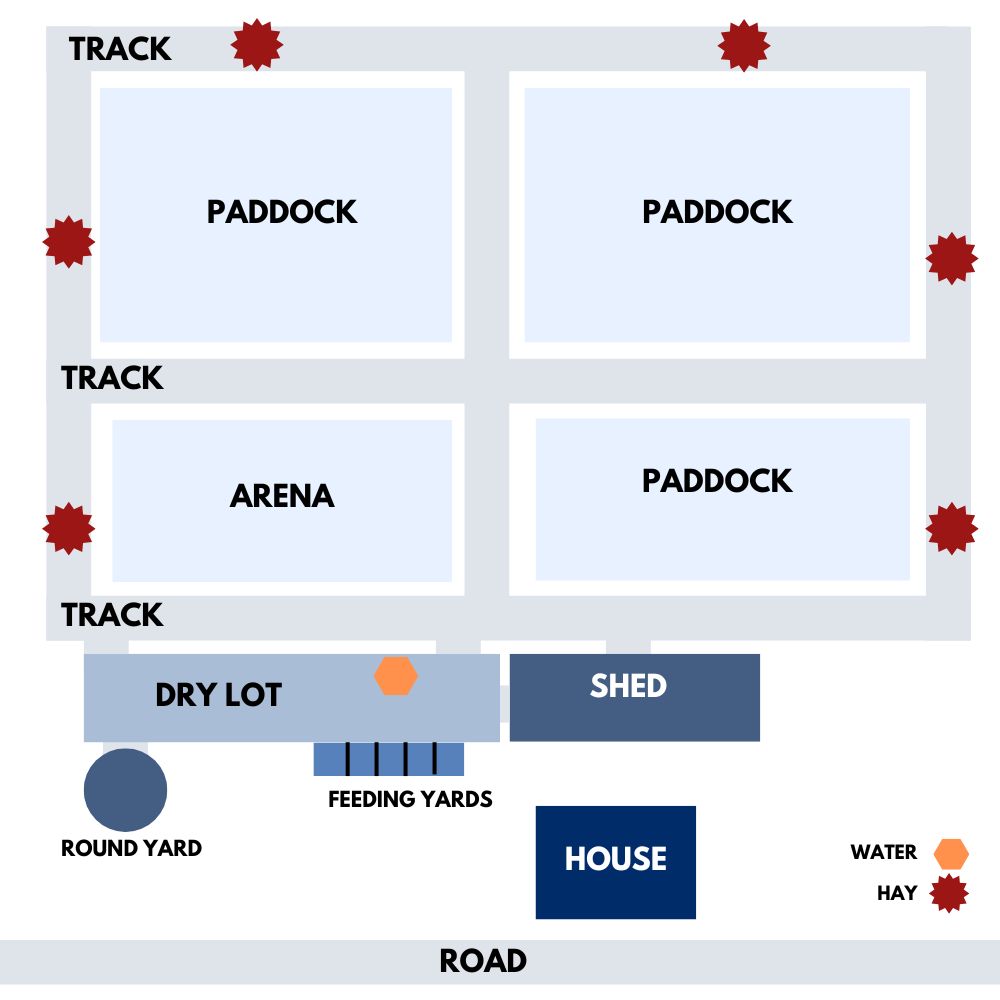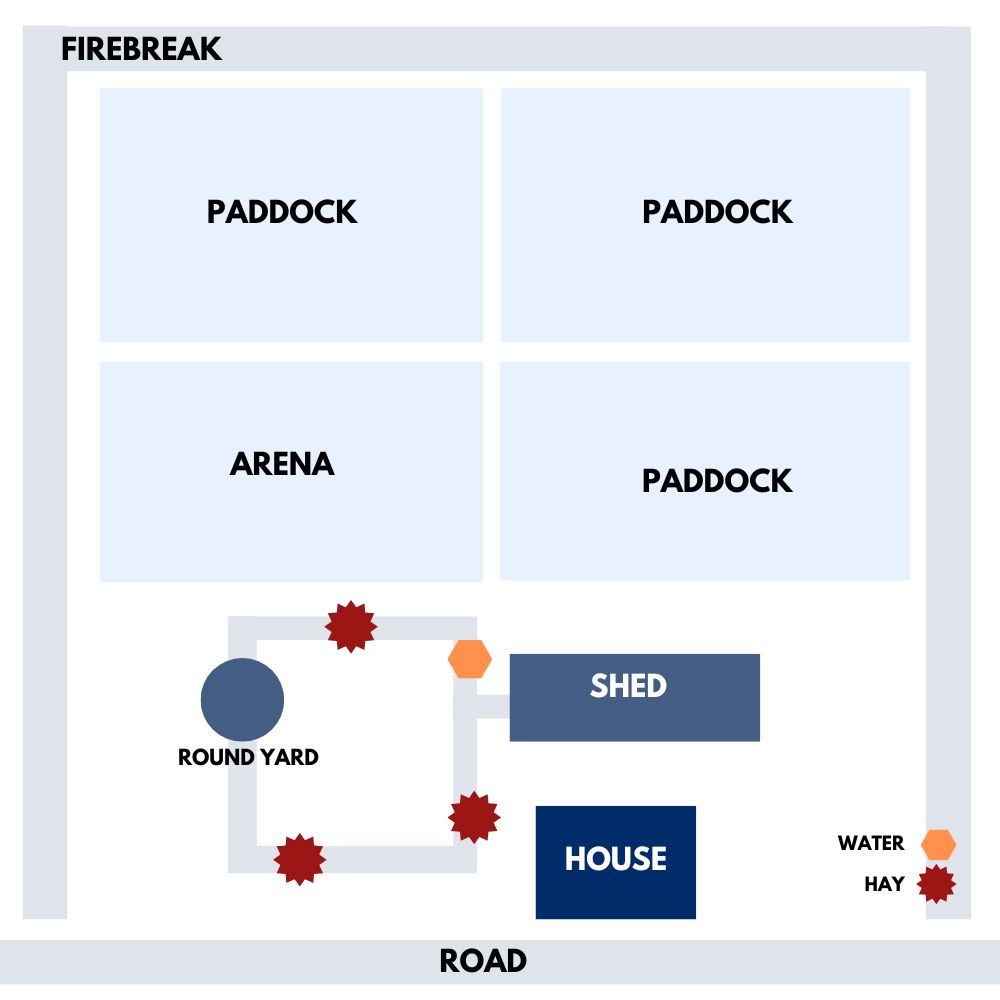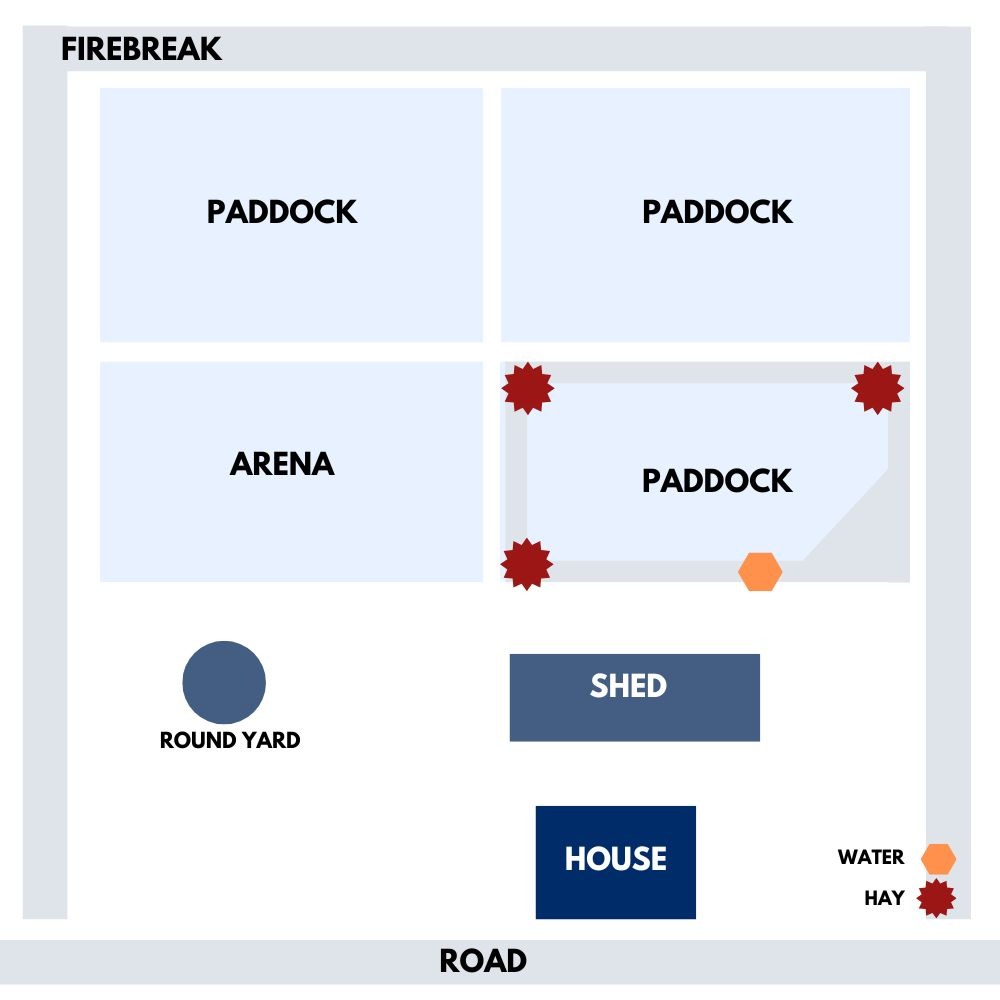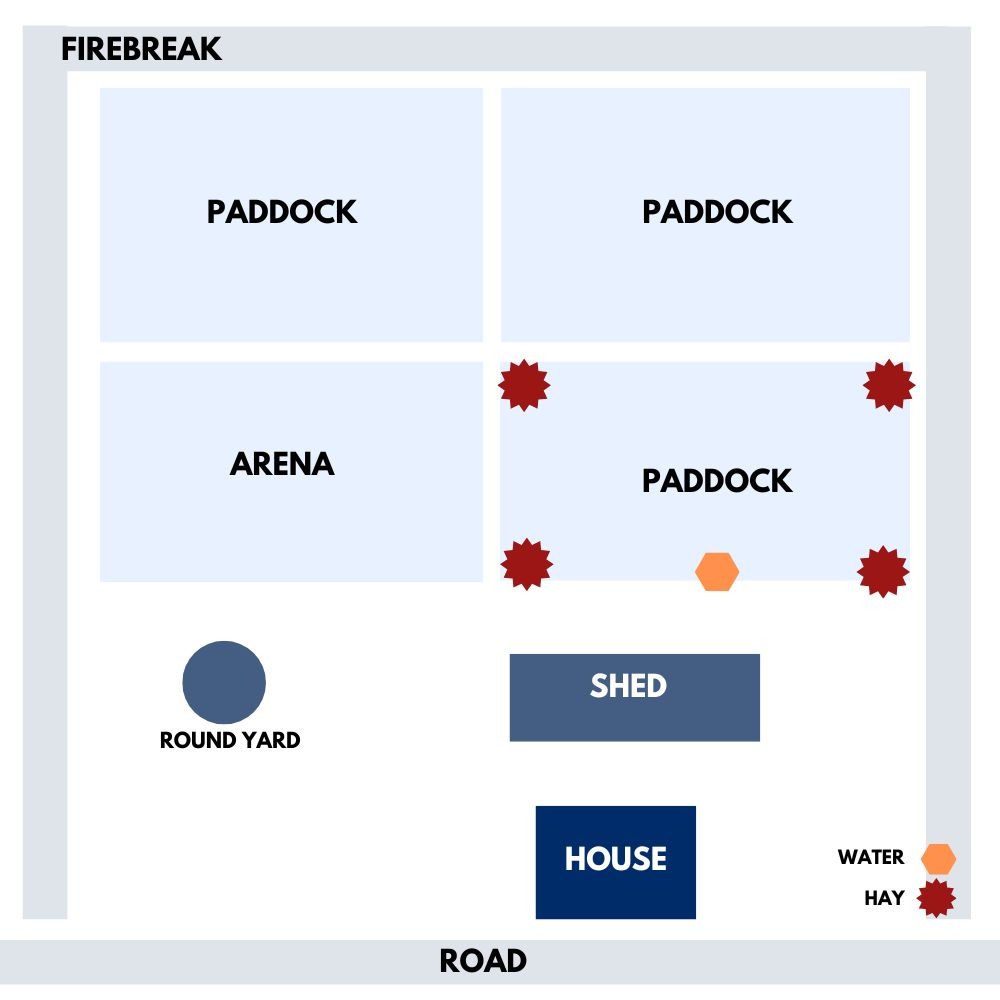The what, when, why, where, who and how
The what
A horse track system is a style of horse keeping and property management that’s gaining in popularity around the world. The design of the system is based on the natural movement patterns of horses and almost every other browsing/grazing animal of the African savannah, compared with the traditional method of keeping livestock.
The basic idea is to fence off specially selected sections of a property, between 3 and 5 metres in width, and whatever length is available, to form tracks for horses to move along. Throughout the track, in specially selected places, incentives are located to encourage horses to move in cyclical patterns. Incentives include food, water, shade, promixity to other horses, areas of safety and areas of interest.
One of the central themes in horse track systems of any kind, is the understanding that horses are social animals and should at least be kept in pairs, if not larger groups or herds.
The when
A horse track system can be created at the time that a property is first developed, or elements of it can be added to the property at any time.
It can take some time to work out what the best layout for a track should be, which is why they are often constructed of temporary/movable fencing materials until the final layout is known.
To illustrate different forms that a track system could take on a basic Australian 5 acre horse property layout, here are some examples.




The why
What gets most people thinking about horse track systems, is a horse in their care who has become unwell as a direct result of diet. Often, metabolic issues like EMS and the resulting laminitis.
At that point, they usually have to start thinking about how they’re going to manage that horse once it’s able to come out of the stable or small yard that it’s been recuperating in, while being able to restrict their intake of grass or hay.
What those people usually find, is that the benefits of creating a horse track system on their property, go well beyond their original purpose and open their eyes to a new way of keeping their horses. I was one of those people.
Reasons for keeping your horses on a horse track system compared with a paddock/stable arrangement include:
Flexibility
Tracks can be grass free or they can have grass on them, and they can incorporate access to pasture or dry lot areas, depending on the horses, the property and the owner. Tracks can be made to connect or pass by different areas, so that eg. bringing horses into yards or stables can be done with no halters (one of my favourite parts).
Movement
On a track as small as 130m, a horse can routinely travel as much as 7km a day. I know this, because I did an informal experiment over the course of 8 months and you can see the results here.
Less hay wastage
When horses have things to do other than stand in front of a hay roll and eat, they tend to eat less. I know this because I did the maths on my unlimited hay use and you can see the results here.
Space
Regardless of how much land you have to work with, you can create a track throughout a property or within a single paddock area. Or if a track isn’t an option, you can adopt the principles of track design in the arrangement of incentives in a single area.
Environment
Horses’ hooves and teeth can strip ground bare if unrestricted access is allowed to land, resulting in erosion, dust and damage to the local ecosystems, particularly if horses are allowed access to forest or woodlands areas.
Health
Because they do so much more walking, horses on a track system very quickly become visibly physically stronger and fitter.
The where
Horse track systems and track liveries seem to have become particularly popular in the UK and parts of Europe. This may be because the pasture of a traditional European paddock setup can be troublesome to many of the native breeds who were designed to run off the smell of an oily rag, but they could play an equally important role in other areas for different reasons. In Australia, particularly the fire-prone forest areas where I live in Western Australia, tracks can easily start off on a property’s firebreak and extend the functionality of that firebreak throughout the property, by providing firebreaks/emergency vehicle access between paddocks/throughout the property as they now do on ours.
Several zoos in Europe now house their equines in a track setup, from PRE horses to shetlands and donkeys.
The concept has been slower to gain momentum in Australia and the US but it’s definitely becoming more popular all the time as evidenced by the now more than 80,000 members of the of the Horse Track System Facebook group.
The who
To the best of my knowledge, the concept of horse track systems was first articulated by a man called Jaime Jackson in his book Paddock Paradise: A Guide To Natural Horse Boarding based on his observation of mustangs, which are descended from horses brought to the Americas by the Spanish in the US, so feral, rather than wild.
I say articulated and not invented because it’s not a concept that anyone came up with, it’s the way that horses lived before they were domesticated. It’s the way that many other animals in the wild live, like the many varieties of herbivore that you’ll see in an African game park including zebra, giraffe, elephant and antelope. It’s also the way of living that feral horses will default to, like the American mustangs and the Australian brumbies of Kosciuszko.
Most modern breeds have only existed as domesticated horses, but the basic design of their minds and bodies started evolving 56 million years ago from a tiny forest dwelling creature called Eohippus, until about 10,000 years ago when the ancestor of the horse as we know it today, came onto the scene. The mechanisms that make them the herd flight animal which roams and grazes in cyclical patterns, are as subconscious to them, as our default human patterns are, of sticking together and sticking to what we know.
The how
Tracks can run around existing paddock areas, or around buildings and other parts of a smaller property if there is no pasture. If tracks run around existing paddocks or pasture areas, horses can be allowed into the pasture areas as required, or not at all. The pasture in the centre of the track areas could be used to make hay, run sheep or just be mowed and left to absorb carbon from the atmosphere as nature intended.
Manure and spilled hay can be used to improve pasture areas, as described in the concept of the Equicentral System which is a model for track system property management.
When considering a track system, the most important factor is the safe introduction and combination of horses on it. There are some livery yards in the UK, most notably Graveney Equine that do an amazing job of combining horses of every shape and size on their tracks through their sensible processes, safe track design and keen horsemanship skills.
Conclusion
Any property, even the humblest and smallest, can be improved to allow horses to move more, eat only what they need, and minimise impact on the land. A track system doesn’t need to be pretty or even very big to achieve worthwhile gains. The key is just to start, be observant and just see where things go from there.

